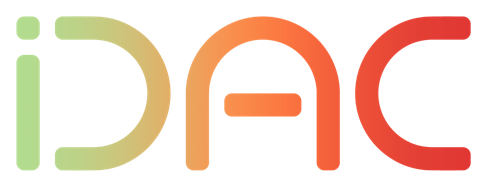Doktorand i Interaktionsdesign
Institutionen för tillämpad informationsteknologi (IT) bedriver forskning och undervisning inom de kompletta miljöerna Informatik, Lärande och Visualisering. Som en del av både Göteborgs universitet och Chalmers tekniska högskola spänner forskningen över ett flertal olika discipliner av stor betydelse för samhället. Institutionen för tillämpad IT har mer än 80 fakultetsmedlemmar och erbjuder ett antal utbildningar för studenter inom olika inriktningar av informationsteknologi. Undervisningen karakteriseras av fokus på samspelet mellan människor och informationsteknologi samt teknologins förhållande till organisationer och världen runt omkring. Institutionen är placerad på campus Lindholmen och har nära samarbete med såväl industri som offentlig verksamhet.
Interaktionsdesign handlar om design av interaktiva artefakter där IT är en central komponent och är ett mångvetenskapligt område där kunskap inom programmering, elektronik, estetik, kognitionsvetenskap, grafisk design och psykologi samverkar och samarbete mellan discipliner är vanligt förekommande. Oavsett användningsområde, kräver design av interaktion mellan människor och teknik ett helhetsperspektiv som omfattar såväl mjukvaruutveckling som produkt- och industridesign.
Anställningen är placerad inom forskargruppen Gothenburg Working Group for Interaction Design and Children (IDAC), http://www.idac.se, som är ett samarbete mellan avdelningen för interaktionsdesign och avdelningen för lärande, kommunikation och IT vid Institutionen för tillämpad IT och Interactive Institute Swedish ICT.
Arbetsuppgifter
Arbetet är knutet till projektet Design av interaktiva pekskärmsbaserade hjälpmedel för barn med kognitiva funktionshinder (Touch-AT) som avser att studera hur informationsteknologi kan användas som stöd för att hjälpa barn med kognitiva funktionshinder. Mer specifikt riktar sig projektet mot barn och ungdomar i särskolan och bruk av enheter med pekskärmsbaserade gränssnitt såsom tablets, smartphones och eventuellt även tabletops. Utifrån identifierade behov kommer projektet att fokusera på design av hjälpmedel som ger stöd för emotionell och social träning snarare än inlärning av färdigheter. Projektet kommer även att fokusera på hur barnen själva kan bidra till designprocessen genom s.k. deltagande design.
Den svenska särskolan omfattar idag ca 12 000 elever. Barnen i särskolan utgör en mycket heterogen grupp då typen och graden av funktionshinder är mycket varierande. Ett återkommande problem är att eleverna har problem med emotionella och sociala färdigheter, något som har konstaterats hos 60-65 procent av alla barn med kognitiva funktionshinder. Trots detta tenderar huvudfokus för undervisningen att ligga på utveckling av barnens kognitiva, språkliga och motoriska färdigheter, och därför är det viktigt att utveckla stöd som kan användas för träning i sociala och emotionella färdigheter. Det har konstaterats att pekskärmsbaserade gränssnitt fungerar bra för barn med kognitiva funktionshinder tack vare den mycket intuitiva interaktion som tillåts och användande av t ex tablets blir allt vanligare i särskolan.
Målet med projektet är att ta fram metoder, riktlinjer och verktyg som kan användas för utveckling och utvärdering av appar som stödjer social och emotionell träning. Projektet kommer även att utveckla och testa ett antal designexempel i enlighet med framtagna riktlinjer. Det kan till exempel handla om sociala situationer där man tränar på att uttrycka och förmedla känslor, och att arbeta i grupp med uppgifter som innehåller moment av turordning och tålamodsträning. Utvecklingen kommer att utgå från principer för användarcentrerad design och ske i en iterativ process.
Arbetet som doktorand i projektet innefattar deltagande design tillsammans med elever, lärare och föräldrar, framtagande av designkoncept och prototyper, samt arbete med metodutveckling och utvärdering. Doktorander erbjuds heltidsanställning, där minst 80 procent av tiden används till forskarutbildning. Den återstående tiden ägnas åt undervisning och administrativa uppgifter. Befattningen avses leda till en doktorsexamen.
Behörighet
Den sökande måste uppfylla kraven för både grundläggande och särskild behörighet för att antas som doktorand i interaktionsdesign.
Grundläggande behörighet till utbildning på forskarnivå har den som har:
-avlagt en examen på avancerad nivå;
-fullgjort kursfordringar om minst 240 högskolepoäng, varav minst 60 högskolepoäng på avancerad nivå, eller
-på något annat sätt inom eller utom landet förvärvat i huvudsak motsvarande kunskaper.
Särskild behörighet: För att antas till forskarutbildning i interaktionsdesign krävs följande:
-att den sökande fullgjort kursfordringar om minst 45 högskolepoäng inom interaktionsdesign eller motsvarande, eller
-på något annat sätt inom eller utom landet förvärvat i huvudsak motsvarande kunskaper.
Befattningen kräver mycket goda kunskaper i svenska, då den innebär insamling och analys av data på svenska i samverkan med elever i särskolan.
Mer information här:
www.gu.se/omuniversitetet/aktuellt/ledigaanstallningar/?id=19144&Dnr=592737&Type=S
